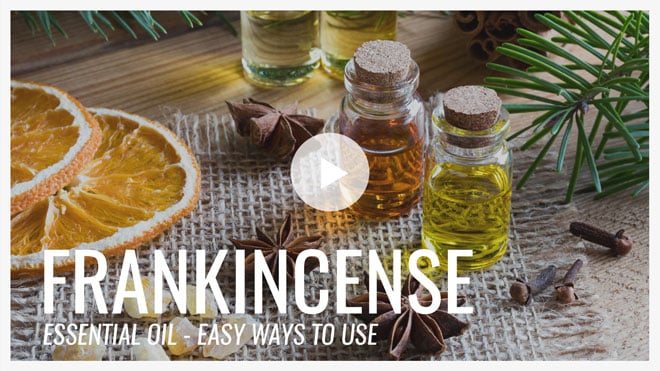
If you’ve never used Frankincense or Myrrh oil you’re missing out on two of the most powerful essential oils on Earth. No doubt, you’ve heard of these oils – most likely the first time you were introduced to them is in hearing the story of Baby Jesus and how the wise men brought Him Frankincense and Myrrh oil.
If you’re like many essential oil users you already know how to use oils like lavender and peppermint without much thought. Lavender is soothing and relaxing and peppermint is great for an energy boost or to calm an upset stomach. But how do you use Frankincense and Myrrh Oil? How can these essential oils be easily incorporated into your daily life?
It’s true that Frankincense and Myrrh are ancient oils. And this is one of the most profound reasons why we should be using them today. Not just because they are old, but because history (and science) shows that there are powerful healing benefits that we can access by using these essential oils.
Initially, both Frankincense and Myrrh were widely used therapeutically all across the Middle East, India, and Africa. But they have been so much more than medicine to these cultures. Often Frankincense and Myrrh were a part of sacred ceremonies and burials as well. They are unique in their properties and they were very precious to people of the ancient world.
Frankincense has been an item of trade for over 5,000 years – used as incense and medicine. It was popular in both the Christian and Muslim traditions, as well as beloved in ancient Egypt.
Myrrh was used in ancient Egypt – it’s even been documented back to a 5th dynasty ruler – where it was used medicinally and in the garden. It is mentioned many times throughout the bible.
And then we come back to today. In the 21st century do ancient oils have a place in our homes and medicine cabinets? Well, modern scientific research says an emphatic: yes!
There’s a reason why all the cultures before us revered them. So let’s dive in to Frankincense and Myrrh oils and see exactly how they are health and wellness powerhouses.
Frankincense and Myrrh Trees & Frankincense And Myrrh Resin
Before we get into the benefits of Frankincense and Myrrh oil, let’s talk about where these oils come from in their natural form: resin from the Frankincense tree and the Myrrh tree.
The Myrrh tree is native to Africa, India, the Arabian Peninsula, the islands off the Indian Ocean, and Vietnam. Frankincense comes from the family of Boswellia trees, which can be found in the Arabian Peninsula and Africa.
The Myrrh and Frankincense trees each produce a sap. When you make some incisions into the tree, that sap will essentially ooze out and then get hard. At that point, the sap has become something called a resin.
This resin can be used to extract the essential oils we are going to learn all about. And in fact, the sourcing of the essential oil (where it comes from regionally) as well as the extraction process (how the essential oils are obtained from the resin) is a really important factor. It affects the purity and potency of the final product (the essential oil). And your results with essential oils are directly tied to their potency and purity.
Frankincense and Myrrh resin (which is also called Myrrh gum) can be used directly for their therapeutic properties. There are three common uses:
- Frankincense and Myrrh incense
- Frankincense and Myrrh soap
- Frankincense and Myrrh resin/gum supplements
What Do Frankincense & Myrrh Smell Like?
Of course, the main reason to use essential oils is for their powerful health and wellness benefits. But – let’s be honest – we want to enjoy the smell of them too, especially when we use them aromatically. Here is what you can expect Frankincense and Mrryh oil to smell like:
What Does Frankincense Smell Like?
Words to describe the smell of Frankincense are:
- Warm
- Earthy
- Clean
- Spicy
- Sweet (slightly)
Many people talk about smelling elements of pine and lemon when they smell Frankincense. Others recognize a honey scent, but don’t think of that descriptor as sugary sweet. The warm, clean, spicy notes are stronger. Know that most people say Frankincense essential oil is a much more pleasant scent than Frankincense resin.
What Does Myrrh Smell Like?
- Smoky
- Spicy
- Sweet
- Bitter
- Dry
- Woody
Like Frankincense, Myrrh has a slight sweetness that comes through an otherwise warmer and smokier scent. The oil is also considered to be a much more pleasant smell than the Myrrh resin. Myrrh is often joined with Frankincense to produce a more enjoyable smell than just using it on its own.
Frankincense And Myrrh Oil Benefits
So now let’s get into the good stuff: the benefits of Myrrh and Frankincense. In other words: What’s the point of using these ancient oils?
There are always so many different ways that any essential oil can benefit you, your family, and your household. This is why we love oils! There are multifaceted uses in a single essential oil making them extremely versatile and they give you a nice bang for your buck too.
There are too many benefits of Frankincense and Myrrh oil to list every single one of them. Below you will find some of the most popular ways (including some of my personal favorites) to use Frankincense and Myrrh oil in your daily life.
Frankincense Benefits
-
Anti-Stress & Anxiety Alternative
One of the most common ways Frankincense oil benefits the average person is lowering all that stress and anxiety. If you’re just not a Lavender person (or you get sick of using Lavender all the time) this is a wonderful alternative. Even if you love your Lavender, but you want to change things up a bit, Frankincense blends very well with Lavender. It’s like mixing deeper earthy notes with the lighter, softer aroma of Lavender. It’s very nice.
What’s also interesting is that studies have shown that Frankincense actually exhibits similar qualities as anti-anxiety medications… all without the negative side effects and dependency!
We love Frankincense so much, we added it to our list of 5 must-have oils for stress relief. But we’re not the only ones who realize how peaceful this oil can be; there’s a reason it has been included in religious ceremonies for millennia. It’s peaceful and serene.
How to Use Frankincense to Lower Anxiety and for Stress Relief
Use Frankincense aromatically by adding 1 or 2 drops to the palm of one hand. Rub your hands together and then cup your hands over your nose. Inhale deeply several times. The calming nature of deep breathing combined with the power of this essential oil promotes feelings of relaxation and helps to ground you. To change it up a bit, add one drop of Lavender and one drop of Frankincense to the palm of your hand and follow the same technique. You can also diffuse Frankincense alone or in combination with Lavender to have similar effects.
-
Immune System Booster
Frankincense essential oil can really help you keep the winter flu bug away from you and your family. This immune system booster can give you a fighting chance by stimulating your body’s natural capabilities to fight against any bad bacteria or virus it comes in contact with.
We use Frankincense regularly as a preventative treatment during cold and flu season. We apply daily in our family and especially anytime we’re going to be around lots of people where environmental threats may be higher (like the airport, shopping centers, any time the kids are heading to preschool or the church nursery we are all about using Frankincense!).
How to Use Frankincense to Boost Your Immune System
The best way to use Frankincense for its immune boosting effects is to apply it to the bottoms of the feet and the back of the neck. The bottoms of the feet are porous, making a fantastic entry point for essential oils to get into your system. You can also apply essential oils to the back of the neck to access the spine and nervous system (anything that’s applied to the skin is absorbed into the blood stream).
The best way to use Frankincense in this way is to dilute with a carrier oil. Carrier oils are awesome because they help essential oils to absorb into the body. They are also great because they reduce any sensitivity by applying oils directly to the skin and when you’re using premium oils like Frankincense, carrier oils make it easier to apply the essential oil to a broader surface area. So, you’re not wasting essential oil.
There are tons of carrier oils that you can choose from, but our personal faves are fractionated coconut oil and almond oil. When you’re ready to use your essential oil, add 1 to 2 drops of Frankincense to half a teaspoon of carrier oil. Rub the oil into the bottoms of both feet. Put on some socks to avoid leaving oil all over your floors or sheets (I love to apply before bed at night too). You can also rub a little bit of the same blend into the back of your neck to access the nervous system.
If you don’t want to mess with carrier oils, you can also get pre-diluted roller ball blends of Frankincense too. These are super easy to apply. Just roll on to the bottoms of the feet or back of the neck and they make it simple (and less messy) to use with small children.
-
Antimicrobial Agent
The antimicrobial nature of Frankincense is one of the reasons it is helpful at warding off illness, but it’s also one of the reasons why it’s so good at helping you knock the illness you wind up with. It’s the perfect oil to have around anytime a sickness is going around your community.
For this reason (and #2), Frankincense is a wonderful oil to use as a general household cleaner. Here’s one of my favorite recipes for a kitchen counter spray. It smells wonderful and I love being able to use something natural. That way I don’t have to worry about my kids (or me or my husband) inhaling toxic fumes from conventional cleaners.
-
Beauty
Frankincense is an incredible beauty oil because of its powerful antioxidant effects. This is why its my favorite oil for anti-aging. It can fade age spots and blemishes like scars from acne (been there!). And it’s anti-aging effects help to minimize the appearance of crows’ feet, laugh lines, and wrinkles. It also has antimicrobial properties that can help to ward off acne. It’s an essential oil that every woman needs to have in her beauty cabinet.
How to Use Frankincense for Anti-Aging and Beauty
Use Frankincense every single day for anti-aging effects. I recommend this to every woman. The best way to do this is to add a drop of Frankincense to your moisturizer. Don’t add the drops to the bottle of moisturizer. The potency of the essential oil will denature over time. Do this fresh out of the bottle each time you apply.
Take the amount of moisturizer you want to use and put it in the palm of your hand. Add your drop of Frankincense and blend it together gently and then apply all over your face.
To fade age spots and scars apply directly to the affected area. Hold your index finger flush to the open bottle of essential oil. Turn the bottle over and apply the amount left on your finger to the spots in question. You need to be very consistent with this to see results. Apply morning and night to start, for a minimum of 3 weeks.
For an anti-aging super product try Immortelle. It contains Frankincense and some of the most potent beauty oils on the market. Roll on around the eyes, mouth nose – anywhere you want to see improvement in wrinkles, fine lines, or age spots.
-
Arthritis Aid
Almost one-quarter of all adults have arthritis, and that number is growing each year. Searching for all-natural products is a must for those who want to either avoid or supplement prescription medications. The anti-inflammatory nature of Frankincense can really help those with arthritis when used topically or internally (more on the ways to use this oil below!).
Keep in mind that with arthritis (or any issues with inflammation) your nutrition is super important. Avoid sugary foods and overloading on carbs because these foods can make the arthritis even worse.
This makes it a great choice for any type of joint pain – including sports injuries!
How to Use Frankincense for Arthritis
With arthritis often you need to cover a broad surface area of skin. This is why carrier oils are so important. Dilute 2 drops of Frankincense in half a teaspoon of carrier oil (we love fractionated coconut oil) and massage into the affected area. Add a drop of Deep Blue essential oil to enhance the anti-inflammatory affects.
-
Plaque and Gingivitis
Your mouth is up next when it comes to benefits of frankincense. One study looked at teenage girls who had gingivitis due to a plaque buildup. Frankincense was able to decrease the symptoms of gingivitis with in two weeks. Both the anti-inflammatory and antimicrobial aspects of the Frankincense oil work to make this happen.
How to Use Frankincense (and Myrrh) for Oral Health
Myrrh oil is also well known for its oral benefits. A great way to use both of these oils is to oil pull with them. Oil pulling is a method used to cleanse the mouth of harmful bacteria, reduce the probability of dental disease and promote detoxification.
The best oil to do this with is coconut oil (not fractionated coconut oil, the regular kind you cook with). Add 1 drop of Frankincense and 1 drop of Myrrh to a tablespoon of coconut oil and swish it around in your mouth. Do this gently and in a relaxed way. You’re not trying to tire yourself out. The goal is 15 to 20 minutes, but even doing this for 5 minutes is beneficial.
Spit the “swished” oil into the trash can. You’ll feel like you just came back from the dentist. Your teeth will feel that clean. Do this once or twice a week.
-
Bladder, Pancreatic, and Brain Cancer Support
There has been some groundbreaking research that shows how Frankincense is a really smart oil and can differentiate between cancer cells and normal cells. Studies show that a compound in Frankincense has been proven to inhibit the growth of cancer cells and suppress their effects on the body.
Another study looked at the way Frankincense could actually help reduce cerebral edema in those currently undertaking brain cancer treatment. It may allow patients to avoid side-effect-laden steroids.
How to Use Frankincense for Cancer Support
Disclaimer: We don’t personally take on clients with cancer and specific uses of Frankincense are still being researched. So, with that said please understand that we are not saying that Frankincense can cure, treat or heal cancer.
Many people use Frankincense by applying it directly to the area where the cancer is. Application to the skin is an effective way to get essential oils into the bloodstream. Dilute with a carrier oil to reduce the possibility of skin sensitivity (fractionated coconut oil is a favorite) and apply regularly.
Myrrh Benefits
-
Antioxidant
By now, most people already know that antioxidants are so important to overall health. The oxidative stress on your cells can cause everything from arthritis and diabetes to heart disease and cancer. Researchers have found Myrrh to be a powerful antioxidant, which can prevent and repair damage to your cells and immune system.
How to Use Myrrh for an Antioxidant Boost
Add 1 to 2 drops of Mrryh oil to half a teaspoon of carrier oil. Rub the oil into the bottoms of both feet. Put on some socks to avoid leaving oil all over your floors or sheets. You can also rub a little bit of the same blend into the back of your neck to access the nervous system. Blend with Frankincense (1 drop of each) to enhance the antioxidant affects.
-
Anti-Aging
Researchers have recently looked at the connections between Myrrh and collagen – that lovely substance that keeps our skin plump, perky, and wrinkle-free. Initial discoveries lead us to believe that Myrrh is exactly the essential oil you may want to be adding to your all-natural skincare regimen to keep your skin looking radiant and youthful.
How to Use Myrrh for Anti-Aging Effects
For great ways to use Myrrh see #4 in the Frankincense section and consider adding a drop of Myrrh to your moisturizer as well.
-
Anesthetic, Antibacterial, Anti-parasitic, and Anti-Fungal properties
Myrrh is powerful at getting rid of foreign invaders that you do not want in your body. It’s gone up against E. coli (which is responsible for all sorts of infections like UTIs and food poisoning), staph (which is responsible for everything from boils to toxic shock), candida (which is responsible for chronic fatigue, allergies, digestive problems, and much more), and fasciola eggs (which are found in stool).
How to Use Myrrh for Anti-Microbial Benefits
These benefits of Myrrh, just like the antimicrobial nature of Frankincense, make this a wonderful choice for a household cleaner (see #3 in the Frankincense section). The antimicrobial effects of Myrrh also make it powerful for dental hygiene. See #6 in the Frankincense section for a great way to add Myrrh oil to your dental regimen.
-
Gynecologic Cancer
The final point on our list of Myrrh benefits focuses on women. Researchers have examined Myrrh for its cytotoxicity effects. This means that can Myrrh be toxic to cancer cells (a really good thing!).
These researchers have found that Myrrh extracts do indeed show some positive signs of killing cancers cells, particularly in gynecologic cancers (like cervical, uterine, vaginal, etc.). So there is promise to incorporate Myrrh (and Frankincense) as a natural support for fighting cancer.
How to Use Myrrh for Gynecological Cancer
See #7 above in the Frankincense section. Consider applying Myrrh and Frankincense (diluted in carrier oil) to the skin that covers the pubic bone to access the uterus and reproductive system.
More Frankincense And Myrrh Uses
Many times people are really excited to start using essential oils, so they buy them and… have absolutely no idea how to use them best. That’s why I wanted to share some practical ways to use these oils.
To make it even easier to enjoy Frankincense and Myrrh oil today, I’m going to break down the top three simplest, fastest, and even cheapest ways to start incorporating them into your daily routine.
-
Inhale Frankincense and Myrrh Oil
Simply breathing in the scents of these oils is incredibly effective – especially when it comes to benefits like anxiety relief, immune system boosting, or antibacterial/antifungal abilities.
The more obvious way to do that is by simply buying a diffuser and letting it fill your house with the aroma of these two oils. Purchasing a diffuser necklace or bracelet is a nice way to inhale the oils at work or while you’re running errands.
But you can also keep it really simple. Breathe in directly from the essential oil bottle for a few minutes, or even place a couple drops in the palm of your hand is a great way to get the benefits.
I will say that Myrrh oil is best used in combination with another essential oil like Frankincense. The aroma is much more pleasant that way and you even enhance the therapeutic benefits of the oil when paired with an essential oil like Frankincense.
-
Use Frankincense and Myrrh Oil Topically
Absorbing these oils into your skin is another great way to access their benefits. To reduce skin sensitivity use both of these oils with a carrier oil like fractionated coconut oil or almond oil. Add one drop of Frankincense and one drop of Myrrh to half a teaspoon of carrier oil.
The easiest way to use this mixture is simply to give yourself a foot massage to absorb the oils into your system.
Here are more ways to use these oils topically:
- Both Frankincense and Myrrh have anti-aging beauty benefits, so a drop can also be added to your facial moisturizer or oil cleanser.
- Another great way to enjoy a combo of both for topical use and inhalation is to add 10 to 12 drops to your bubble bath and then add underneath the running water.
-
Take Frankincense and Myrrh Oil Internally
Both of these oils can be ingested – but that’s only true if they come from reputable brands labeled safe for internal use. Simply add one drop into 4 fl. oz. of liquid and drink it down. If you want to mask the strong flavor of the oils, you can take them in a veggie capsule or add them to almond or cashew milk.
To help with any plaque and gingivitis issues, you can gently swish the Frankincense in water around your mouth a few times before swallowing it (you can also just gargle and spit if you’d prefer).
Can Everyone Use Frankincense and Myrrh Oil?
Remember – just because something is all-natural and a health powerhouse doesn’t mean it’s always a free-for-all. Here are a few words of caution.
Do not use Frankincense oil if you take any anti-coagulant or have a bleeding disorder
Do not use Myrrh oil…
- If you are a diabetic
- If you are about to go into surgery (stop at least 2 weeks in advance)
- If you take any anti-coagulant or have a bleeding disorder
And please remember that while we have discussed the use of Frankincense and Myrrh oil for cancer, we are not saying that these oils in and of themselves can treat, heal or cure cancer. Please consult your doctor first and use essential oils as an added layer of support.
Enjoying Frankincense And Myrrh Oil
These ancient oils have endless modern uses, so make them a staple in your home. They are simple to use and the aroma (especially when blended together) is warm and soothing – similar to a holiday-scented candle (yet much safer for the air you breathe).
Everything from your skin and teeth to your immune system and cells can reap the benefits of these oils that have been around for thousands of years.
So now let’s turn this article into a discussion. What are your favorite ways to incorporate Frankincense and Myrrh oils into your daily life? Do you combine them? Use them separately? How have they impacted your overall health, wellness, or mood? Leave a comment below with your thoughts.
References
- Frank, M. B., Yang, Q., Osban, J., Azzarello, J. T., Saban, M. R., Saban, R., & Lin, H. K. (2009). Frankincense oil derived from Boswellia carteri induces tumor cell specific cytotoxicity. BMC Complementary and Alternative Medicine, 9(1), 6.
- Park, B., Prasad, S., Yadav, V., Sung, B., & Aggarwal, B. B. (2011). Boswellic acid suppresses growth and metastasis of human pancreatic tumors in an orthotopic nude mouse model through modulation of multiple targets. PLoS One, 6(10), e26943.
- Khajuria, A., Gupta, A., Suden, P., Singh, S., Malik, F., Singh, J., … & Qazi, G. N. (2008). Immunomodulatory activity of biopolymeric fraction BOS 2000 from Boswellia serrata. Phytotherapy research, 22(3), 340-348.
- Samani, M. K., Mahmoodian, H., Moghadamnia, A. A., Mir, A. P. B., & Chitsazan, M. (2011). The effect of Frankincense in the treatment of moderate plaque-induced gingivitis: a double blinded randomized clinical trial. Daru: Journal of Faculty of Pharmacy, Tehran University of Medical Sciences, 19(4), 288.
- Pethakar, S. R. (2011). Screnning Of Frankincense Oil For Anti-Anxiety Activity In Mice (Doctoral dissertation, KLE University, Belagavi, Karnataka).
- Van Vuuren, S. F., Kamatou, G. P. P., & Viljoen, A. M. (2010). Volatile composition and antimicrobial activity of twenty commercial frankincense essential oil samples. South African Journal of Botany, 76(4), 686-691.
- Ashry, K. M., El-Sayed, Y. S., Khamiss, R. M., & El-Ashmawy, I. M. (2010). Oxidative stress and immunotoxic effects of lead and their amelioration with myrrh (Commiphora molmol) emulsion. Food and Chemical toxicology, 48(1), 236-241.
- Su, S., Wang, T., Chen, T., Duan, J. A., Yu, L., & Tang, Y. (2011). Cytotoxicity activity of extracts and compounds from Commiphora myrrha resin against human gynecologic cancer cells. Journal of Medicinal Plants Research, 5(8), 1382-1389.
- Dolara, P., Corte, B., Ghelardini, C., Pugliese, A. M., Cerbai, E., Menichetti, S., & Nostro, A. L. (2000). Local anaesthetic, antibacterial and antifungal properties of sesquiterpenes from myrrh. Planta medica, 66(04), 356-358.
- Leem, K. H. (2015). Effects of Myrrh extracts on the anti-wrinkle activity and anti tyrosinase activity in Hs68 human fibroblasts.
- The Truth About Cancer (2017). The Healing Gifts of Myrrh Essential Oil. Retrieved from: https://thetruthaboutcancer.com/myrrh-essential-oil/
- https://en.wikipedia.org/wiki/Myrrh
- https://en.wikipedia.org/wiki/Frankincense


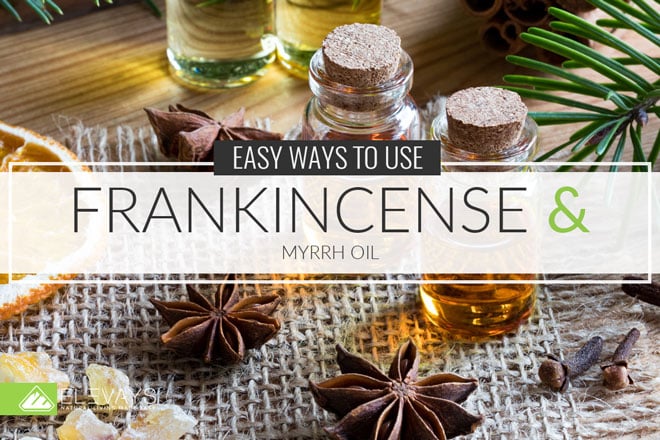
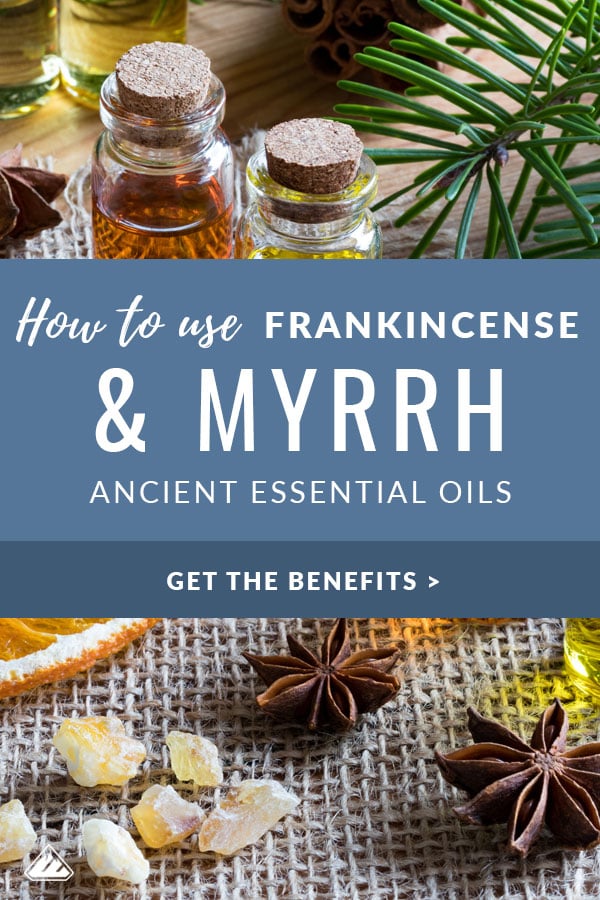
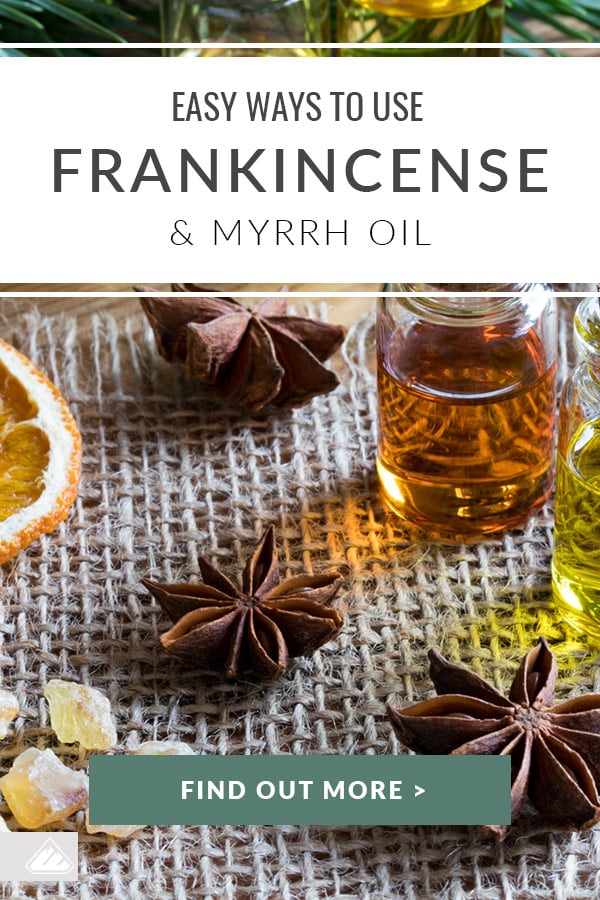
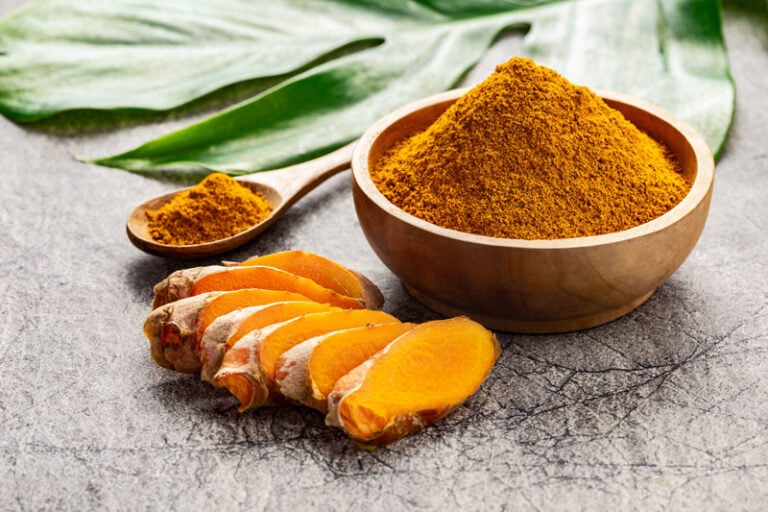

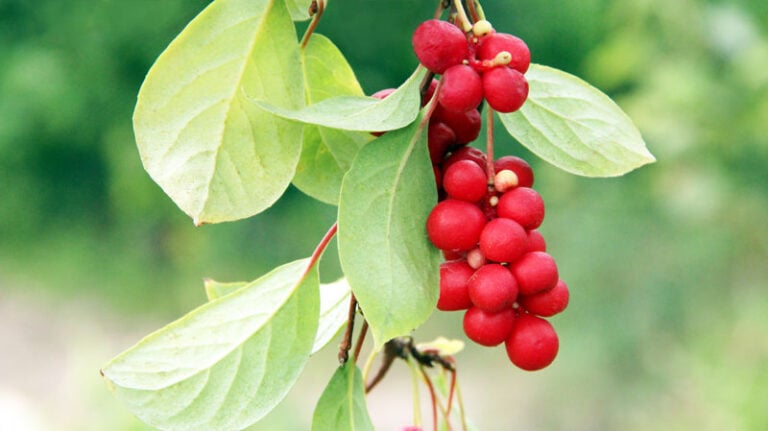

It was nice to know that myrrh oil has properties that can keep your skin looking youthful, so it’s best to add it to your skincare regimen. My sister and I are getting bothered by how our face looks because we feel like we’re starting to look older than our current age due to the appearance of our wrinkles. Since we’re a fan of essential oils, we’ll be sure to buy myrrh oils soon.
Hi Ellen! Myrrh oil is wonderful for skin health. You’ll love it!
I decide to use this combo with teumaric powder
Using them with turmeric makes a wonderful combo!
I need to know where can I find a combination of Indian frankincense and myrrh oil to take internally. I suffer from osteoarthritis, but a friend suffers from severe ulcerative colitis and I read it can also be vey beneficial for that condition, so I would love to be able to help him.
I have read about them both separately, but would like to know if there is a place where I could buy the combination.
I would appreciate your letting me know as soon as you can.
Thank you.
Hi Raquel,
Check your email. I sent you a reply with this information. 🙂
Can i put two drops on my tea?
Hi there! It’s important to remember that essential oils are extremely concentrated, so stick to one drop of only high quality oil.
I am a type 2 diabetic and would like to know why I shouldn’t use myrrh.
According to Healthline.com: If you’re taking diabetes medication, keep in mind that myrrh may lower blood sugar. Therefore, this combination could potentially result in blood sugar that’s too low.
https://www.healthline.com/nutrition/myrrh-oil
Bit informational post…Well done.
You say “Here’s one of my favorite recipes for a kitchen counter spray”, but them don’t add any further details…section 3 above…What do you add the oil to, how much etc.? Thanks for any more info.
Hi! Thank you for reaching out. Here is one of my favorite recipes for DIY All-Purpose Disinfectant Cleaning Spray. You can sub out any of the essential oils for ones that you prefer, or frankincense! The ones I list are my personal favs for a clean smell and surface. Hope this helps (:
Ingredients
1⁄4 cup white vinegar
1 1⁄2 cups distilled water
10 drops of lemon essential oil
10 drops of wild orange essential oil
15 drops of doTERRA’s OnGuard Essential Oil Blend
To Use
Add all ingredients to a 16 oz. dark glass spray bottle. Spray the surface and wipe with a clean cloth. For extra cleanliness, I let it sit on the surface for a few minutes to kill any bacteria. Smells great and works like a charm!
I really enjoyed reading all the information about these essential oils and the benefits you can get from them Thank you I will start using them One question do you think I may get some benefit for my osteoporoses?
Hello! Thank you for reaching out. I’m glad you enjoyed the article. You can definitely get some benefits for osteoporosis. Try good-quality, therapeutic grade essential oils like helichrysum, wintergreen, lemongrass, cypress, fir, peppermint, and eucalyptus. Self-massage and other healing modalities like acupressure and acupuncture might also be something to look into. Hope this helps!
I purchased a balm Made with 100% frankincense and myrrh essential oil with a coconut carrier oil. I have been using it on the bottom of my feet because I have peripheral neuropathy. It really helps but I wanna make my own it’s too expensive to purchase a 4 ounce jar of it.
How do I make a balm (thick paste) With the two essential oils and I’m assuming it’s coconut oil in the solid format to equal 4 ounces. I’d like to refill my jar I have everything ready I just don’t know how to put the three ingredients together.
Regards,
Judy
Hi Judy! Coconut oil is great, mix it together with 15-20 drops of each oil. Make sure the jar is glass and a dark amber so the oils stay in tack. Glad to hear oils are helping you!